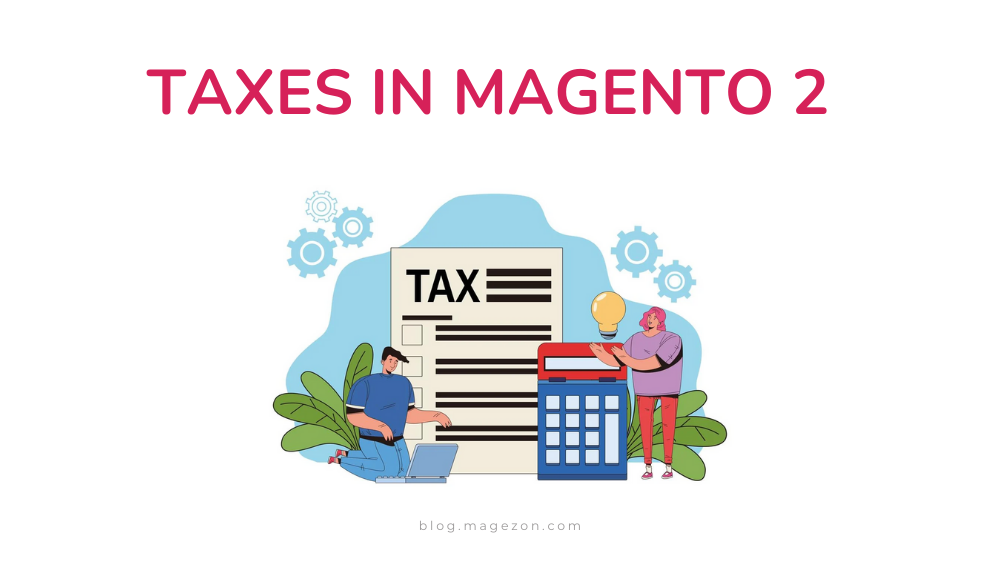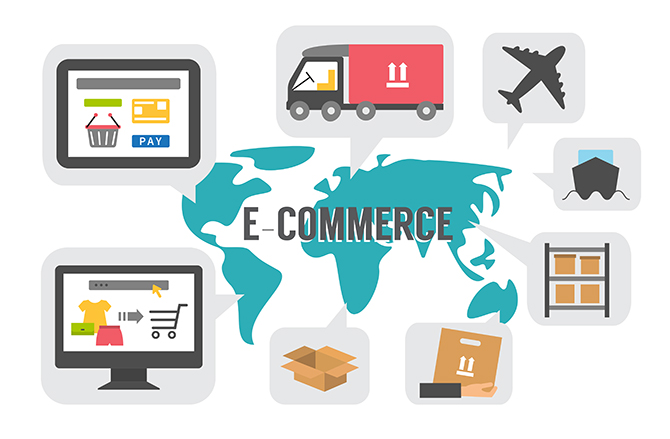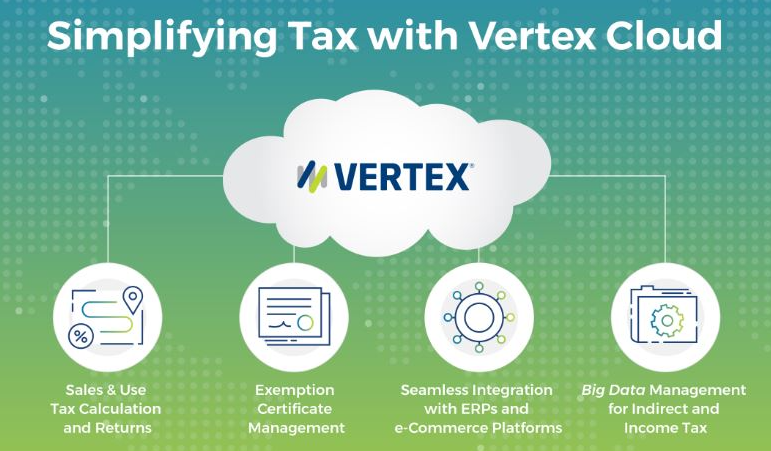
For a long time, tax has always been one of the top concerns of all businesses. E-commerce businesses, particularly ones that are working on Magento platform, are no exception. So having a basic understanding of Magento taxes is one of the most important factors for the growth of your business. Through this article, we will provide you with the most important information about Magento taxes.
Table of contents
Understanding e-commerce and sale taxes
E-commerce is the business activity of buying and selling goods, products, and services transacted through the internet. These business transactions take place between entities that are B2B, B2C, C2C, or consumer to business (C2B).
Therefore, every time an individual or company buys or sells a product or service online through the internet, they are engaged in e-commerce.
E-commerce is powered by the internet, where customers can visit an online store to view and order products or services through their electronic device. While e-business deals with all aspects of an online business, e-commerce deals specifically with the transaction of goods and services.

The term “e-commerce” also includes other activities. Including online auctions, internet banking, online payment gateways, online sales, bill of lading lookups. And for e-commerce businesses, there’s actually only one kind of tax, that is sales tax.
1. Sale taxes
Let’s start with the basics of Sales tax. Sales tax is a small percentage of the value of the item sold by the online retailer at the time of that sale. It is a “consumption tax,” which means that consumers only pay sales tax on taxable items they purchase at a retail store.
Most regions of the world have a sales tax. And within each of those regions, there may be a separate tax calculation for items sold there.
You may see local areas with oddly combined sales tax numbers. Some typical countries like the US will not have a national sales tax. Taxes in the US depend entirely on each state.

As a result, e-commerce sellers may be subject to quite different sales tax laws. And rules when dealing with sales tax in different parts of the world. So keep reading and we’ll help you gain a basic understanding of Magento sales tax.
What you should know about Magento taxes
1. Magento Tax Classes
First, retailers will create their default Magento tax classes. After the shop owner creates the tax classes, the shopping cart of each customer will be carefully analyzed by the business to assign the tax class to them. From there, the tax in Magento will be calculated based on customer class, cart product class, and region (as determined by the customer’s shipping address, billing address, or shipping origin).

| Articles you may like: What is Magento 2 VAT? How to choose Magento 2 best extension for e-commerce 20+ Magento website examples to bloom your online store |
Once Magento 2 tax rules are defined, new tax classes can be created. The tax class together with the tax rate determines the final amount of tax charged on the purchase of the product. There will be 3 different default Magento taxes that Magento 2 offers you to set up: customer, product, and shipping.
- Customer: This is a Magento 2 tax class that you can create as many as you like depending on your store’s needs. For each of your customer groups, you can create Magento 2 tax classes and assign them to customer groups. For example, in some regions, wholesale customers will be taxed less than retail customers, so you can create a separate tax class that includes wholesale customers and link them to it.
- Product: Product class will help businesses calculate the exact tax rate applied to products in counterfeit goods. Once the product is created, it will be assigned a specific tax in the product tax class. For example, agricultural products will not be taxed or will be taxed less than electronic goods.
- Shipping: If your store charges taxes during shipping, you can create a separate tax class and assign it to ship. For example, customers in a different region will have a different shipping tax class.
2. Magento Tax Rates
This is the tax rate that the government requires e-commerce businesses to collect. Each individual geographic area will have a unique identifier, so tax rates are usually applied to purchases in a certain area. However, you can have multiple tax rates for a given area because there will be items that are taxable in this area but not others.

So the first thing that you need to do is configure the tax rate. The address of the store will be the basis for calculating the tax on the goods. As for customers, after they complete the order information, the actual customer tax for an order will be calculated. Commerce will then calculate Magento taxes based on the store’s tax configuration. Therefore, Magento developed the Region and Tax Rate tool to make it easy for you to specify Magento tax rates for each geographic area in which you collect and pay taxes.
3. Tax Rules
The combination of the tax rate, product class, and customer class gives us the Magento 2 tax rules. A customer and each product in the store will be assigned a separate customer class and product tax class.

From the basis of that Magento tax rule, each customer’s shopping cart will be analyzed by Commerce and calculated an appropriate tax. Based on the customer, product, and location criteria (based on the shipping address, billing address of the customer).
4. Vertex Cloud
Vertex is a solution service of Magento, it is built on the cloud platform. This service will help you automate your sales and use tax compliance and generate a signed PDF file for the amount you receive every month. You need to create an account on Vertex first and then complete the configuration settings to get started.
Integrations include configuring Magento taxes and removing addresses for your stores, per-country overrides, and performance-enhancing options.
Vertex includes many of the following benefits:
- Automatically calculate Magento taxes & returns: Magento tax calculation is always complicated, time-consuming. Therefore, Vertex automatically calculates taxes to save you time, reduce unintended risks and help you not be late in your tax return.
- Sales tax & use tax: Depend on the tax records of each product purchased and the jurisdiction Vertex Cloud calculates the cart sales tax in Magento.
- Exception Certificate Management: Trading in the international market will be very complicated because each region will have its own tax regulations. Vertex helps you identify areas with non-standard taxes and manage customers in those regions.
- Automatically generate returns: Vertex Cloud automatically regenerates signature-ready PDF returns and sends messages when bounces are available

Update in the latest release
- Featured:
Admin order cleanup: The vertex address validation module exposes a validation button and updates the address for orders created from the shop owner.
- Improve:
VAT fallback: The value-added tax number and country from the customer’s account are used as default if the VAT number is not specified at checkout.
Vertex offers customers flexible cost plans tailored to each user’s needs. Specifically, three cost packages come with access to additional services depending on each package. All Vertex accounts will pay only the usage tiers you want and no additional fees or annual transaction estimates. Vertex will also assist you in choosing the right package for you and then guide you to register an account on Vertex Cloud to use.
5. VAT
Just like normal value-added tax, value-added tax in Magento is a tax incurred during the production of a product until it reaches the user. This is the tax that end-users on Magento will have to pay. The amount of tax collected will depend on the customer’s delivery location and the default settings of the e-commerce business.

Configuring Value Added Tax (VAT) is a solution to help you solve the difference in methods VAT collection method in Magento 2. The difference will come from your address and whether the goods you provide are products, materials, or services. With Magento 2 VAT function, you can create a data management table containing your country, Magento 2 VAT rate, customer type, etc. Therefore, Magento has provided the Configure Value Added Tax (VAT) backend for Magento 2.
You can get detailed information and knowledge about Magento VAT here.
Final Words
Through this article, we can see that tax is a very complicated but necessary area, especially for sellers on Magento 2. Therefore, having a certain understanding of Magento Taxes is a very important thing. Hopefully, after reading the article, you have the necessary understanding of Taxes in Magento to expand your business and boost sales dramatically.

Optimize Your Magento Store With Powerful Extensions
Looking for fast, efficient and well-coded extensions to build or optimize your Magento stores for sales boosting? Then visit Magezon website and grab necessary add-ons for yours today!
 Magezon Blog Help Merchants Build Comprehensive eCommerce Websites
Magezon Blog Help Merchants Build Comprehensive eCommerce Websites

